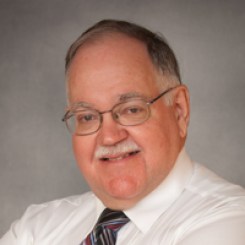NorthEast Radio Watch 12/15/2025: NYC Morning Shakeup
In this week’s issue… NYC morning shows exit - Carton back amidst WFAN shakeup - FM signing off in Canada - More radio centennials
In this week’s issue… What TV will look like without channels 30-51 – WEEI, Red Sox extend deal – Seven Mountains buys again – CBC seeks new London expansion – New FM in Quebec?
By SCOTT FYBUSH
*One of the themes that was impossible to miss at last month’s NAB Show in Las Vegas was the uncertainty surrounding the impending TV spectrum auction and repack. Now a bit of that uncertainty has been stripped away with the FCC’s announcement that it intends to auction off 126 MHz worth of what remains of the UHF TV dial, wiping out all TV past channel 29.
 But if we now know with certainty that the spectrum of present-day channels 30-36 and 38-51 will go into the auction pool at the end of this month, we don’t know exactly what the TV dial will look like in a few years when the auction and repack are completed.
But if we now know with certainty that the spectrum of present-day channels 30-36 and 38-51 will go into the auction pool at the end of this month, we don’t know exactly what the TV dial will look like in a few years when the auction and repack are completed.
Just because we don’t know all the details yet doesn’t mean we can’t answer some questions, though, and so, as we do from time to time, here’s a little unpacking of the repack:
Plenty of questions, then, and we’re at best informed speculators when it comes to most of the answers. We’ll be watching closely as the answers begin to develop…

As we announced a few weeks ago, the 2026 edition of the Tower Site Calendar will be the last.
We began publishing it 25 years ago, and the broadcast landscape is radically different now.
Radio World just ran an excellent article about us if you want to know more.
Once it’s gone, that’s it. We won’t be printing any more.
Thank you to everyone who saw our announcement and rushed to buy it. We appreciate you.
(There are some calendars from previous years if you want more of a tower photo fix — all under $5.)
But don’t wait to get this year’s Tower Site Calendar — buy it now!
We are selling the Broadcast Historian’s Calendar again this year, but we have that in an even smaller quantity — definitely don’t hesitate for that.
And visit the Fybush Media Store to check out our selection of books and videos, too!
[private]
*We’ve spent a ton of time in the MASSACHUSETTS section of this column over the years pondering the future of Boston Red Sox radio broadcasts, but we can put that aside for a few more years with the word that the Sox and incumbent broadcaster Entercom have signed another extension to their deal that will keep the team on WEEI-FM (93.7) through the 2023 season.
 As we’d expected, the new deal is a little easier on Entercom’s pockets than the ten-year, $200 million deal that set records when it started in 2006. Back then, of course, the Sox had multiple suitors for their radio rights, including the prospect of partial ownership of Greater Media’s WBOS (92.9). This time around, WBOS is off the table, and it appears that in the midst of its impending spinoff, CBS Radio wasn’t a strong contender for Sox radio rights, either. (We hear that CBS was more interested in using the Sox to bolster AM news-talker WBZ than in adding the team to the strong Patriots-Bruins lineup at “Sports Hub 98.5” WBZ-FM, while the Sox wanted a consistent FM flagship.)
As we’d expected, the new deal is a little easier on Entercom’s pockets than the ten-year, $200 million deal that set records when it started in 2006. Back then, of course, the Sox had multiple suitors for their radio rights, including the prospect of partial ownership of Greater Media’s WBOS (92.9). This time around, WBOS is off the table, and it appears that in the midst of its impending spinoff, CBS Radio wasn’t a strong contender for Sox radio rights, either. (We hear that CBS was more interested in using the Sox to bolster AM news-talker WBZ than in adding the team to the strong Patriots-Bruins lineup at “Sports Hub 98.5” WBZ-FM, while the Sox wanted a consistent FM flagship.)
Boston.com reports that the new Sox/WEEI deal is worth about $15 million a year, still a very healthy figure for a team that’s been less than impressive on the field these last few seasons. By the time it’s over, it will take WEEI close to the three-decade mark with the Sox; the team came to WEEI (then on AM 850) in 1995 and has been with Entercom ever since, including a three-year stretch when the Sox moved down the dial to WRKO (680).
All of which leads to the conclusion that we’re in for a lengthy period of status quo: Sox and Celtics on WEEI, Patriots and Bruins on WBZ-FM and perhaps the strongest sports radio rivalry in America poised to continue into the next decade.
(Out west, meanwhile, the Berkshire Eagle picked up on something we missed, which was the disappearance of Yankees broadcasts from WBRK 1340 in Pittsfield this season. The locally-owned AM station says the rights fees for the WFAN-produced coverage had become too expensive.)
*We now have the rest of the pieces of the deal between Horizon Christian Fellowship and Maine’s Light of Life Ministries: Horizon is paying Light of Life $105,000 for WWRN (88.5 Rockport), which was already carrying Horizon’s “Renew FM” programming. “Renew” is also airing on WMDR (1340 Augusta) up in Maine, as well as on WMDR’s 94.3 translator.
*In Worcester, UMass is selling WFCR (88.5) translator CP W247CD (97.3) to Townsquare Media, which will move it to Augusta, Maine to relay WJZN (1400). Townsquare will pay $85,000 for the translator, which Beth Griffin brokered.
 *In New Bedford, Jim Phillips has left the building for the last time. Phillips (right) started at WBSM (1420) in 1973, left for local cable news in 1984, then came back to WBSM as news director in 2006.
*In New Bedford, Jim Phillips has left the building for the last time. Phillips (right) started at WBSM (1420) in 1973, left for local cable news in 1984, then came back to WBSM as news director in 2006.
*And we’re sorry to pass along news of the death of John Carlson, whose career in Boston sports radio went back to Brockton’s WBET (1460) in the 1950s. Carlson went on to work Patriots radio broadcasts on WBZ in the 1970s and on WEEI (590) from 1980-86, including the radio call of Super Bowl XX. He served as a sports talk host on WEEI starting in 1974, and later did sports talk on WRKO (680) as well. Carlson also called New England Whalers hockey, ECAC college hockey and other sports, as well as Minnesota Vikings football later in his career. In recent years, he was most often heard on Boston airwaves as the voice for a replacement countertop company. Outside of radio, he coached junior football and had a long career with the Massachusetts Army National Guard, which he served as assistant adjutant general. He died April 5, at age 82.
*A CONNECTICUT translator conflict has been resolved with Family Stations’ amendment to its translator application for WCTF (1170 Vernon). Instead of requesting 97.5 for the relocated W282AD (104.3 East Windham NY), WCTF has now been granted a modification to put the translator on 92.1; that, in turn, cleared the way for the competing Hartford-area 97.5 application from WKND (1480 Windsor) to also be granted.
*Following the death of RHODE ISLAND icon Buddy Cianci, Providence’s WPRO (630)/WEAN (99.7) unveils its new talk lineup today. Dan Yorke moves into Cianci’s former 3-6 PM slot from middays, with Matt Allen taking Yorke’s former noon-3 slot. Tara Granahan, who’d been filling in since Cianci’s death, moves to 6-9 PM, which makes WPRO one of Cumulus’ most live and local stations, straight through from Gene Valicenti’s morning show and John DePetro’s 9-noon slot right up until the syndicated John Batchelor at 9 PM.
*Radio people on the move to VERMONT: Paul Jarvis is departing Greater Media’s WBOS (92.9) in the Boston market after a decade at the station, where he’s most recently been APD, music director and morning jock. Starting May 11, Jarvis goes home to Burlington to become operations manager at the Vox cluster and PD of WEZF, conveniently also on 92.9.
 *In the Bangor, MAINE market, WWNZ (1400 Veazie) has dropped late owner Dan Priestly’s news-talk format in favor of classic country as “The Country Road” under new owner Chuck Begin.
*In the Bangor, MAINE market, WWNZ (1400 Veazie) has dropped late owner Dan Priestly’s news-talk format in favor of classic country as “The Country Road” under new owner Chuck Begin.
*NEW YORK‘s WABC (770) has promoted Noam Laden to news director. Laden has been part of the WABC staff for a decade now, and since 2011 he’s anchored the 5 AM “News Hour” that leads into Don Imus.
In Albany, the ongoing shifts at iHeart move Randy McCarten up to operations manager for the entire cluster, which in turn brings Terry O’Donnell back up the Thruway from the PD gig at iHeart Poughkeepsie to replace McCarten as PD/afternoon jock at WKKF (Kiss 102.3) in Albany. At Kiss, O’Donnell gets to compete with Pamal/Albany Broadcasting’s WFLY, where he spent five years as PD.

 In Ithaca, Saga is moving its “Buzzer” CBS Sports Radio feed from W254BF (98.7) to the stronger signal of W242AB (96.3). The move displaces a WYXL (97.3) simulcast from the translator – and it clears the way for the 98.7 translator license to be moved to Greenfield, Massachusetts, where it will become a translator for Saga’s WHMQ (1240).
In Ithaca, Saga is moving its “Buzzer” CBS Sports Radio feed from W254BF (98.7) to the stronger signal of W242AB (96.3). The move displaces a WYXL (97.3) simulcast from the translator – and it clears the way for the 98.7 translator license to be moved to Greenfield, Massachusetts, where it will become a translator for Saga’s WHMQ (1240).
There’s word of the death of Marty Wilson, who hosted “Milkman’s Matinee” on WNEW (1130 New York) from 1980 until 1987, most of the time handling the weekend overnight shifts at the legendary standards station. Wilson later served as co-owner president of WXCT (1220 Hamden CT, now WQUN) into the early 1990s, when he moved to Florida and did voiceover work and the syndicated “A Moment of Musical History” feature. Wilson had also worked at the old WEVD (1330/97.9) and at WHLI on Long Island.
*A story of patience from the NEW JERSEY shore: back in 2003, Ted Schober applied for a translator on 97.9 in Manahawkin, only to face opposition from Jersey Shore Broadcasting, which noted that Schober hadn’t obtained confirmation that his desired transmitter site was available. The FCC rescinded its grant of Schober’s CP, but he appealed, noting that a 1998 FCC order had removed the requirement of site assurance for auction participants. All these years later, the Commission has finally acted on Schober’s appeals, restoring his grant for a CP for W250BA, which is on paper as a translator of WEHA (88.7 Port Republic), though in practice we expect it to be put up for sale sooner rather than later.
 *In PENNSYLVANIA, Family Life Ministries is selling its south-of-Erie rimshot, WCGM (102.7 Wattsburg), to Sam Jordan’s Williamsport Broadcasting, Inc. It will pay $840,000 over five years for the class A signal, which will complement its existing WWCB (1370 Corry). WWCB and its new sister FM are soon to be on the move – they’re relocating from 122 North Center Street to 4 South Center Street this week, where they’ll gain extra studio space in a building that was formerly home to the American Cancer Society.
*In PENNSYLVANIA, Family Life Ministries is selling its south-of-Erie rimshot, WCGM (102.7 Wattsburg), to Sam Jordan’s Williamsport Broadcasting, Inc. It will pay $840,000 over five years for the class A signal, which will complement its existing WWCB (1370 Corry). WWCB and its new sister FM are soon to be on the move – they’re relocating from 122 North Center Street to 4 South Center Street this week, where they’ll gain extra studio space in a building that was formerly home to the American Cancer Society.
(For Family Life, the 102.7 signal had become somewhat redundant; it serves Erie on a 98.7 translator, while WCOB 89.9 Cambridge Springs covers the area south of Erie and a new 101.5 translator serves Corry.)
*If the WCGM sale sets a new high benchmark for FM station values, there’s a counter-example not far down US 6, where Cary Simpson continues his broadcast selloff with a $400,000 deal that sends WNBT (1490 Wellsboro), its translator W225AT (92.9 Wellsboro) and FM simulcast WNBT-FM (104.5 Wellsboro)/WNBQ (92.3 Mansfield) to Seven Mountains Media LLC/Southern Belle LLC.
Those paired companies are owned by the wife and daughter of Forever’s Kirby Confer, and they’ve been on a buying spree in central Pennsylvania lately. Will WNBT-FM/WNBQ’s AC format give way to more of the “Bigfoot Country” Seven Mountains/Southern Belle has been programming south of Williamsport?
 *In Pittsburgh, there’s a fight brewing near the top of the FM dial between Tim Martz, who hopes to move a translator to 107.3 for his WAMO (660), and Renda’s WHJB (107.1 Greensburg). Renda’s St. Pier Group filed a petition against Martz’s Radio Power after it filed to move W283CB (104.5 Jonestown) to a site east of Pittsburgh, where it will complement WAMO’s existing in-city translator on 100.1. Last week, Radio Power and Family Life Ministry (which is selling the translator) fired back, saying St. Pier/Renda had filed too late to participate in the proceeding and that the 107.3 translator won’t interfere with WHJB in the areas where the station had identified potentially affected listeners.
*In Pittsburgh, there’s a fight brewing near the top of the FM dial between Tim Martz, who hopes to move a translator to 107.3 for his WAMO (660), and Renda’s WHJB (107.1 Greensburg). Renda’s St. Pier Group filed a petition against Martz’s Radio Power after it filed to move W283CB (104.5 Jonestown) to a site east of Pittsburgh, where it will complement WAMO’s existing in-city translator on 100.1. Last week, Radio Power and Family Life Ministry (which is selling the translator) fired back, saying St. Pier/Renda had filed too late to participate in the proceeding and that the 107.3 translator won’t interfere with WHJB in the areas where the station had identified potentially affected listeners.
*Former station owner John W. “Bud” Angst has died. Angst served in the Coast Guard in the Mediterranean during World War II, then went on after the war to launch AM signals across the state, including WMBA (1460 Ambridge), WLSH (1410 Lansford) and WPAM (1450 Pottsville). Angst was a pioneer in radio editorializing and in local talk radio; among his stations’ shows was the daily “Ask Your Neighbor,” hosted by his wife, Alice.
After selling the radio stations, Angst founded a weekly newspaper in Lansford, the “Midweeker,” then served as a Schuylkill County correspondent for other newspapers.
Angst also had a political career, serving three times as a Schuylkill County commissioner. He died April 26 at age 93; survivors include Alice, with whom Angst had celebrated his 70th anniversary on the morning of his death.
 *And in Latrobe, we extend our condolences to WCNS (1480) on the sudden loss of Dow Carnahan, an on-air fixture at the Westmoreland County station for more than 30 years
*And in Latrobe, we extend our condolences to WCNS (1480) on the sudden loss of Dow Carnahan, an on-air fixture at the Westmoreland County station for more than 30 years
As WCNS explains, Carnahan “served numerous roles…including morning news anchor, talk show host, Operations Manager, and sports broadcaster for Greater Latrobe High School football and basketball as well as St. Vincent College football and basketball. In 2015, he was recognized by the Pennsylvania Association of Broadcasters (PAB) for Outstanding Radio Coverage of a Local Sports Event for his play-by-play call of the 2014 St. Vincent College Basketball – PAC Championship Game. Dow also received the PAB’s Outstanding Local Radio Newscast Award in 2013 and 2014.”
*CANADA‘s second-largest Francophone market could get a new FM signal, but it’s not yet clear whether it will be in French or English. The CRTC announced last week that it’s received two applications for new stations on 105.7 serving Quebec City. One, from Evanov, is a second attempt at launching an English-language “Jewel;” the 5 kW signal would be the first Anglo commercial station in Quebec City in decades. The other, from Gilles Lapointe and Nelson Sergerie, would be for an 8 kW commercial French-language station.
The applications prompted the CRTC to issue a call for comments on whether Quebec can sustain another commercial station, and if so whether it should be in French or English. Comments in the proceeding are due May 30, with reply comments due June 9.
 In Shawinigan, Quebec, today is moving day for “Radio Shawinigan” CFUT. The community station moves from 91.1 to 92.9 at noon, boosting power from 199 watts average/250 watts max DA to 2.1 kW average/3.9 kW max DA.
In Shawinigan, Quebec, today is moving day for “Radio Shawinigan” CFUT. The community station moves from 91.1 to 92.9 at noon, boosting power from 199 watts average/250 watts max DA to 2.1 kW average/3.9 kW max DA.
*In Rouyn-Noranda, Quebec, the CBC has filed for a frequency change and power increase at CBMA (99.9), its Radio One outlet. The station would go from 91.9 (with 1 kW/145 m ND) to 99.9, with 2.7 kW/110 m ND.
In London, Ontario, we’re seeing some of the first effects of the CBC’s increase in funding. After putting plans for a new local morning show on Radio One on hold back in 2012, the Corporation announced last week that it’s once again moving forward on a local show that will air on CBCL (93.5) in place of the Toronto-based “Ontario Morning” regional offering. What’s more, CBC plans to use London as a pilot for a new local digital/online hub, the details of which remain vague.
And to the east, Canadian Radio News reports the CRTC has denied Newcap’s application for a new 94.3 in Kentville, Nova Scotia, determining that the market can’t handle an additional commercial signal.
[/private]
From the NERW ArchivesYup, we’ve been doing this a long time now, and so we’re digging back into the vaults for a look at what NERW was covering one, five, ten, fifteen and – where available – twenty years ago this week, or thereabouts. Note that the column appeared on an erratic schedule in its earliest years as “New England Radio Watch,” and didn’t go to a regular weekly schedule until 1997. One Year Ago: May 4, 2015 *Back in 2011, one of our big stories from CANADA‘s largest market was the demise of CKLN (88.1), the Ryerson University-associated station that ended up losing its license after years of internal leadership conflicts and failure to comply with the CRTC’s rules. Now one of Toronto’s smaller college stations is going through a surprise format change, and many who found CHRY (105.5) after CKLN’s demise are wondering if the CRTC will let the York University station continue with the transition it’s making. Since its arrival on the FM dial in 1986, CHRY has been a consistently inconsistent voice of Toronto’s (and the university’s) cultural mixing pot. Programmed by volunteers from both the campus and the surrounding community, CHRY’s schedule had a little bit of everything, with an emphasis on service to the sizable Caribbean population of north Toronto. And then came Friday morning: in the space of just a few hours, news began spreading among CHRY’s dozens of volunteer programmers that they weren’t going to be around much longer. Then came unofficial word that CHRY was about to flip to a more professional-sounding format, followed quickly by an official announcement that the station would soon relaunch as “VIBE105.” *In NEW YORK, Saturday was the closing act for Vin Scelsa and his “Idiot’s Delight” show at WFUV (90.7 New York). The veteran freeform DJ closed out his last New York gig to the sounds of Lou Reed – but not before announcing a surprise replacement. Paul Cavalconte is a WFUV alumnus, Fordham class of 1983, and he’s been working pretty much nonstop in New York radio ever since, at the old WNCN (104.3), WPIX-FM (101.9) and all of WPIX’s successors on that frequency right up to the ill-fated FM News WEMP. In the last few years, he’s been a fill-in host at WQXR (105.9) and at WFUV, which has hired him to host “Cavalconte’s Cavalcade” in the old “Idiot’s Delight” time slot, 8-10 PM on Saturdays. *Since she joined the staff at CONNECTICUT‘s WTIC (1080 Hartford) way back in 1974, Dana Whalen has kept a low profile – but the outcry was long and loud when WTIC’s current owner, CBS Radio, dismissed her as news director last week. Whalen, whose time at WTIC was interrupted only by a few years spent launching WTIC-TV (Channel 61) in the 1980s, drew effusive praise from current and former colleagues, including WNPR talk host Colin McEnroe. “Dana has been the model of a working journalist, all grit, no flash,” McEnroe wrote in the Hartford Courant. “She’s the lunchpail broadcast journalist in a profession dotted with divas.” *Sad news from VERMONT: Joel Chandler, who was the first host of WCAX-TV (Channel 3)’s long-running “Across the Fence” when that show started back in 1955, has died. Chandler, a Plattsburgh native, also did radio at Burlington’s WJOY and WCAX/WVMT and Plattsburgh’s WEAV, as well as TV at Vermont ETV. Chandler died April 23 at age 87. Five Years Ago: May 2, 2011 *Does broadcast radio still matter? It certainly did last week in the tornado-ravaged south, where good old-fashioned radio (and over-the-air TV) kept going strong with emergency information even as wireless networks and cable were collapsing under heavy winds, overloaded systems and power outages. And it apparently still matters in Erie, PENNSYLVANIA, to the tune of at least $1.4 million. That’s where the bidding for a new FM channel stands as round 13 of the FCC’s FM Auction 91 opens this morning. The class A facility on 92.7 is by far the priciest construction permit among the 144 signals up for bid in this auction, and the bidding war between Rick Rambaldo’s First Channel Communications and Jeff Warshaw’s Mini-Me group has been getting national attention, not to mention a front-page article in the Erie Times-News. Rambaldo, of course, is the broadcast entrepreneur who entered the Erie market in 1989 by flipping sleepy little North East-based WHYP-FM (100.9) to market-leading rocker “Rocket 101” (WRKT), eventually building up to a six-station cluster that’s now in the hands of Connoisseur Communications – which is the same ownership group behind Mini-Me. At the other end of the Keystone State, they’re mourning one of the longest-serving voices of the all-news era at Philadelphia’s KYW (1060). Don Lancer died last Monday (April 25) after a battle with lung cancer. Born Donald Kelsh Jr. in Auburn, N.Y., Lancer started his career in nearby Syracuse at WOLF, later moving to the legendary WKBW in Buffalo, where his work included a role in that station’s famed 1968 take on “War of the Worlds,” and then to WIFE in Indianapolis before arriving in Philadelphia in 1970. At KYW, Lancer spent many years as a business anchor, leaving briefly in 1996 for a stint as a talk host at sister station WPHT (1210), then for good in 2008 when he took voluntary retirement to spare the station from cutting the jobs of younger co-workers. Don Lancer was 68. *NEW YORK City’s newest radio station is getting closer to its debut. Cox has applied for a license to cover for its move of WCTZ (96.7 Port Chester) from its longtime transmitter site in Stamford, CONNECTICUT to the top of the Trump Plaza building in New Rochelle – and once that New Rochelle signal is on the air, Cox can complete the transfer of the 96.7 license to California-based EMF Broadcasting, which will flip the signal to a relay of its “K-Love” contemporary Christian format under new calls WKLV-FM. There’s one more piece to the chess game that has to happen, and it will take place early this week: WTSX, also on 96.7, will move from Port Jervis, New York to Lehman Township, Pennsylvania, clearing the way for WCTZ/WKLV-FM’s move closer to the Big Apple. Ten Years Ago: May 1, 2006 Today’s the day new programming launches at WESX (1230 Salem), as the station’s new owners-to-be take control from the Asher family, which has owned the station since the fifties. Last Friday, fans of the little local station honored longtime personalities Al Needham and Betty Stavis at a ceremony at Salem City Hall that drew about 150 people. Under its new ownership, WESX will replace local programming with a format that’s expected to be primarily foreign-language religious programming. That format will arrive at sister station WJDA (1300 Quincy) soon, too, though it appears the local programming on WJDA will be around for at least a few more weeks. On the FM dial, WBCN (104.1 Boston) has named a new afternoon team. “Toucher and Rich” come to Boston from Atlanta (where Fred Toucher was on modern rocker WNNX) and Dallas (where Rich Shertenlieb was a producer of the syndicated “Kidd Kraddick” morning show), and their arrival moves Hardy from afternoons to evenings and Mark Hamilton from evenings to overnights. One of VERMONT’s locally-owned radio voices is being sold, but all within the station family. Tri-State Broadcasters, which has owned WTSA (1450 Brattleboro) and WTSA-FM (96.7 Brattleboro) since 1985, is selling the stations to William and Kelli Corbeil. William Corbeil began his broadcast career as an intern at WTSA and later worked at WIZN in Burlington before returning to his family’s auto dealerships. Corbeil says WTSA’s staff (including WTSA-FM morning host John “Clarke” Kilduff, one of the station’s current owners) will remain unchanged, and that no changes are planned to the AM’s sports programming or the FM’s adult contemporary format. The battle over that controversial WFUV (90.7 New York) tower in the Bronx ended with a whimper early last week. Now that WFUV is on the air from its new site at Montefiore Hospital, Fordham University officials acted without any publicity at all to take down the never-completed tower that stood on the edge of the Fordham campus, overlooking the New York Botanical Garden. It’s always nice when these things end happily, and all sides are now satisfied – the Garden has its view back (not that we ever found the tower all that ugly!), and WFUV has a better signal from the Montefiore site than it ever would have had from the Fordham tower, had it been completed. Fifteen Years Ago: April 30, 2001 The biggest news came from QUEBEC, where a Cessna piloted by Gilbert Paquette, 38, of Ste.-Therèse struck the top of the tower between Trois-Rivières and Shawinigan that was home to most of the FM and TV stations serving the Mauricie region of central Quebec. Paquette’s plane lodged a few dozen meters below the top of the 300-plus meter guyed tower, killing the pilot on impact Sunday afternoon (April 22). After studying the situation, local authorities decided it was unsafe to climb the tower to retrieve Paquette’s body. Declaring the tower itself damaged, they brought it down at week’s end by cutting the guy wires. Paquette’s widow protested the plan, saying officials should have tried harder to recover the body before bringing it down with the wreckage and the tower itself. The other big news from CANADA, of course, is the impending demise of music on Toronto’s CHUM (1050). Mayor Mel Lastman declared this week to be “1050 CHUM Week,” and the countdown is underway for the big “Final Hours” show, to take place Monday, May 7 from 10 AM until 3 PM. Duff Rowan and Bob Laine will be hosting. CHUM Group is also making official its plans to launch the “Team” sports format in Montreal next week, with “Team 990” replacing “Oldies 990” at CKGM on May 7. The station has signed a deal to carry Expos baseball in English, returning the team to the Anglo airwaves there for the first time since the 1999 season. Up north in New York, the word is that the AC sounds of “The Valley” will make their permanent home on the new 96.1 Norwood signal (now WYSI), while the original “Valley” signal at 96.7 in Canton (now WVLF) will join Tim Martz’ “Yes FM” hot AC simulcast, along with WYSX 98.7 Ogdensburg and WYUL 94.7 Chateaugay. Bet we see a WYSI/WVLF call swap soon… Working our way back down towards Albany, Vox submitted a three-part plan to the FCC that will move the “Wheels” oldies signal much closer to the Capital District from its current Glens Falls home. Here’s how it works: Vox would move WHTR, now licensed to Corinth, from 93.5 to 93.7. It would then move that 93.7 allocation from Corinth down to Scotia, not far from Schenectady. And to keep a “first local service” in Corinth, sister station WFFG (107.1) would change city of license from Hudson Falls to Corinth. MAINE saw the launch of a new “W-Bach” outlet April 23, as WMDI (107.7 Bar Harbor) became WBQI at 6 AM, bringing classical music to the Mount Desert Island area. Just to the southwest, Gopher Hill changed calls on its WAYD (105.5 Islesboro); the standards station is now WBYA, the former identity of 101.7 Searsport, recently flipped by Clear Channel to “Fox” WFZX. Twenty Years Ago: April 30, 1996 From the high-school front: WHHB in Holliston MA has completed its transmitter move. This little class D outlet used to run 18 watts from the roof of the high school; now, according to an article in the (Framingham MA) “Middlesex News,” it’s moved to a nearby cell-phone tower, giving it somewhat better reach. The new evening lineup took effect this week at Boston talker WRKO (680). Lori Kramer and Leslie Gold, aka “Two Chicks Dishing,” now hold down the 7-10pm slot last occupied by Charles Adler. Dr. Laura, who must be on just about every AM station in the country by now, takes over 10pm-1am from Phyllis Levy and “Sex Talk.” |
In this week’s issue… NYC morning shows exit - Carton back amidst WFAN shakeup - FM signing off in Canada - More radio centennials
In this week’s issue… Veteran newsman returns - Remembering NY's Leitner, RI's Jones - CT AM saved - Maine AM moves - "Indie" adds suburban signals
In this week’s issue… Scripps stations face takeover - Sinclair moves more affiliations - CT stations sold - Maine AM surrendered - Remembering WVBR's Shapiro, WABC's Morgan
In this week’s issue… CT TV legend succumbs to cancer - Remembering PA's Adams - FCC still stalled by shutdown - Pittsburgh morning host exits